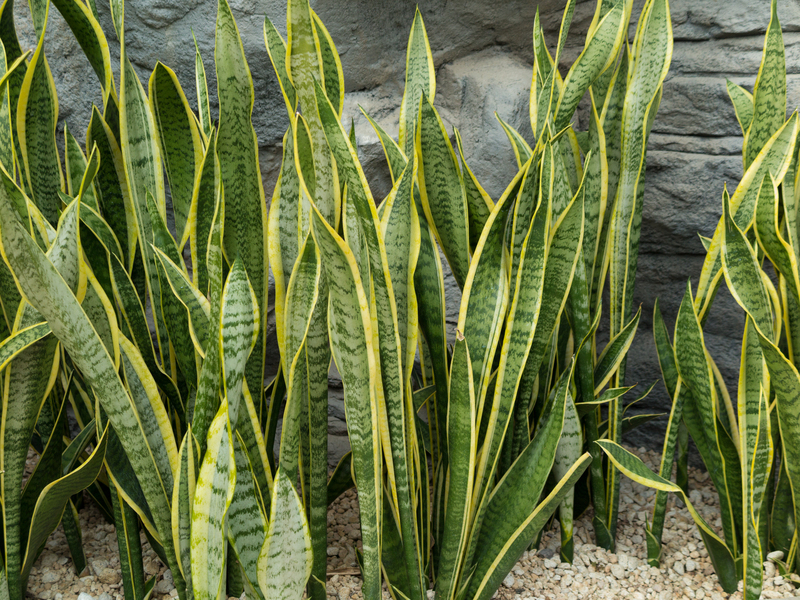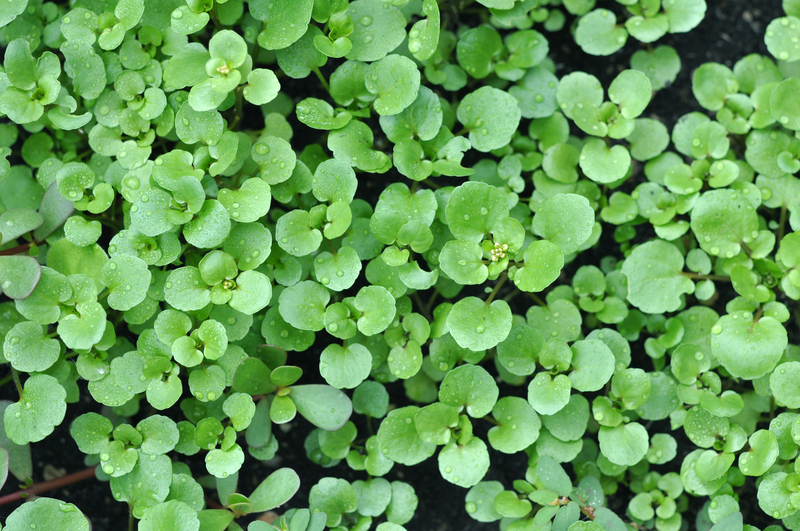Discover How to Protect Garden Plants All Winter Long
Posted on 14/06/2025
Discover How to Protect Garden Plants All Winter Long
Winter can be a treacherous time for your beloved garden. As temperatures drop and conditions become harsh, your precious plants require special care to survive and thrive until the warmth returns. Discover how to protect garden plants all winter long with this comprehensive guide filled with actionable tips, techniques, and expert recommendations.
Why Winter Protection for Garden Plants Is Essential
It's easy to overlook your garden during the colder months, but winter plant care is crucial for ensuring that flowers, shrubs, and trees remain healthy. Here's why safeguarding your garden plants is so important:
- Cold stress: Extreme cold can cause bark splitting, leaf scorch, and root damage.
- Frost damage: Frosts can kill tender shoots and disrupt plant growth cycles.
- Desiccation: Wind and lack of moisture can dry out plants, even in cold weather.
- Pest and disease management: Some pests and diseases thrive in the dormant season unless preventative measures are taken.
By learning how to protect garden plants in winter, you'll transform your garden into a year-round beauty spot and set the stage for abundant growth in spring.

Assessing Your Garden Before Winter Arrives
Preparation is the first step. Well-prepared gardeners have the best results, and the tips you follow now can make all the difference. Here's how to evaluate your garden for winter readiness:
Identify Vulnerable Plants
- Annuals and tender perennials are the most sensitive to freezing temperatures.
- Tropical and subtropical species require special winter protection strategies.
- Young or newly planted trees and shrubs need extra care, as their roots are often not fully established.
Understand Your Local Climate
- Check hardiness zones and know your area's lowest average temperature.
- Consider microclimates within your garden; some areas may be more sheltered or exposed.
Key Strategies for Winter Plant Protection
From classic methods to modern techniques, these strategies will help you keep your plants healthy all winter long:
1. Mulching: Nature's Blanket for Garden Beds
Mulch is one of the most effective ways to insulate plant roots and retain soil moisture during winter. Here's how to do it right:
- Wait for the Ground to Freeze: Apply mulch after the ground has frozen to prevent rodents from nesting and to keep soil at a consistent temperature.
- Use Organic Mulches: Options include straw, wood chips, pine needles, shredded bark, or compost.
- Depth Matters: Apply a 2 to 4-inch layer to adequately protect roots without suffocating them.
- Mulch Tender Perennials and Roses: For extra protection, especially for delicate roots and crown.
Mulching garden plants for winter not only protects from frost but also feeds the soil as materials break down.
2. Covering Plants: Shields from Cold and Wind
Covering is a critical step to protect garden plants from cold weather and sudden frosts. Explore these plant covers for winter:
- Frost cloths: Lightweight, breathable material safe for direct plant contact.
- Burlap: A durable, reusable solution for wrapping shrubs and trees.
- Garden fleece or old blankets: Temporary coverings for unexpected cold snaps.
- Plastic covers: Only for short periods, as they can trap moisture and cause rot if left on too long.
Support covers with hoops or stakes to prevent them from crushing delicate crowns and stems. For newly planted or tender shrubs, create a simple frame and drape your chosen fabric over it, securing the bottom to keep out cold winds.
3. Watering Wisely: Hydration is Key
Many gardeners underestimate the importance of water during winter. Even dormant plants need moisture!
- Water well in late autumn before the ground freezes.
- Ensure evergreens especially are well-hydrated to prevent winter burn.
- Avoid watering during heavy frost, as wet soil can freeze and damage roots.
Proper hydration makes plants less susceptible to desiccation and helps them weather temperature fluctuations.
4. Pruning and Maintenance: Prepare for Dormancy
Pruning helps remove damaged or diseased branches, preventing them from harboring pests or breaking under snow. Key tips on pruning before winter:
- Summer-flowering shrubs can be pruned in fall, but spring bloomers should be left until after flowering.
- Remove any dead or broken branches.
- Clear out fallen leaves and debris to minimize diseases.
Good garden hygiene is essential for protecting garden plants during winter and reducing pest problems.
5. Windbreaks and Shelter: Buffer Against Harsh Weather
Exposed gardens are more susceptible to damage from icy winds. Strategic use of windbreaks can help:
- Plant evergreen hedges or use temporary screens made from burlap, reed, or even snow fencing.
- Group potted plants together against a warm wall for shelter.
This technique is especially helpful for delicate species and container plants.
6. Special Care for Container Plants
Protecting potted plants in winter is a unique challenge, as their roots are more vulnerable to freezing. Try these ideas:
- Move pots into a sheltered location, such as a garage, shed, or cold frame.
- Cluster pots to reduce exposure and wrap them in insulating materials like bubble wrap or burlap.
- Raise pots off the ground with pot feet or bricks to improve drainage and reduce frost risk.
*Extra insulation* will give your container garden the best shot at surviving until spring.
The Best Ways to Protect Specific Types of Garden Plants in Winter
The strategies above provide a solid foundation, but some plant types require tailored winter care. Discover how to keep your favorite plants safe:
How to Protect Perennials in Winter
- Cut back dead stems after the first hard frost.
- Apply mulch around crowns, but avoid burying them to prevent rot.
- Mark the location of late-emerging perennials to avoid accidental damage during spring clean-up.
How to Safeguard Shrubs and Trees
- Wrap young trunks with burlap or tree wrap to prevent sunscald and pest damage.
- Protect from salt spray by erecting burlap barriers if you're near roadways or walkways.
- Stake young trees if heavy snowfall or ice storms are common in your area.
Tips to Shield Vegetable Gardens All Winter Long
- Use cold frames or cloches to extend growing seasons for hardy greens and root crops.
- Mulch heavily to insulate and suppress weeds.
- Rotate crops and practice good sanitation to prevent overwintering pests.
Bonus Tips for Protecting Garden Plants in Cold Seasons
- Use garden fabric tunnels to cover rows of plants, creating a microclimate that's several degrees warmer.
- Invite beneficial wildlife like birds, which control insect pests that may overwinter in your beds.
- Check regularly for storm damage, broken branches, or pest infestations, even during winter.
- Don't fertilize late in autumn; it can spur new growth that's vulnerable to frost.
- Remove snow GENTLY from branches to prevent breakage. Don't shake ice; let it melt naturally.
Common Mistakes to Avoid When Protecting Garden Plants in Winter
Learning how to protect your garden all winter long also means avoiding common errors:
- Overwatering: Can lead to root rot as plants won't uptake much water when dormant.
- Using impermeable plastic for long periods: Traps moisture and encourages fungal diseases.
- Ignoring container drainage: Waterlogged pots can freeze and break roots or ceramic pots.
- Insufficient mulching: Thin layers don't provide needed insulation.
- Pruning at the wrong time: Stimulates tender growth or removes protective stems too soon.
Organic and Eco-Friendly Winter Plant Protection Methods
Protecting your garden sustainably is easy with natural, earth-friendly solutions:
- Choose biodegradable mulches and covers.
- Repurpose old blankets or sheets for temporary frost protection.
- Plant native species, which are better adapted to local winter conditions.
- Create leaf or brush piles as wildlife habitat, but keep them away from your main garden beds to prevent pests.
Preparing for Spring: What to Do as Winter Ends
Once winter is drawing to a close, take proactive steps for a lush spring:
- Gradually remove covers and mulch as temperatures warm so plants can acclimate.
- Inspect for freeze damage and prune only after last frost risk passes.
- Resume watering and feeding for actively growing plants.
- Refresh mulch layers to suppress emerging weeds.

Frequently Asked Questions: Protecting Garden Plants Over Winter
Do all plants need winter protection?
No, but tender, young, or non-native plants benefit the most. Hardy natives generally require minimal care.
Can you use plastic sheets to protect plants from frost?
Only as TEMPORARY overnight protection; remove them during the day to avoid trapping moisture and overheating plants.
What's the best mulch for winter protection?
Organic materials such as straw, shredded leaves, pine needles, and bark are best, as they insulate and break down to enrich soil.
When should you start covering plants for winter?
Begin as soon as frost is forecast or when nightly temperatures drop consistently near freezing.
Conclusion: Keeping Your Garden Plants Safe All Winter Long
Winter doesn't have to spell doom for your garden. With thoughtful preparation and the right techniques, you can protect garden plants all winter long and ensure a vibrant, thriving landscape come spring. Remember to assess your garden every season, use protective coverings, mulch appropriately, and stay attentive to changing weather conditions. Enjoy the peace of mind that comes with knowing your treasured plants are safe--no matter how cold the winter gets!
For a flourishing garden year after year, start your winter protection strategy today!

